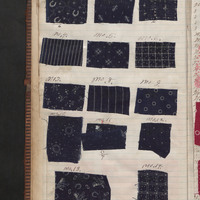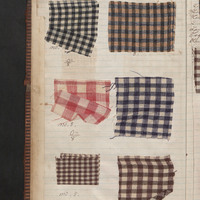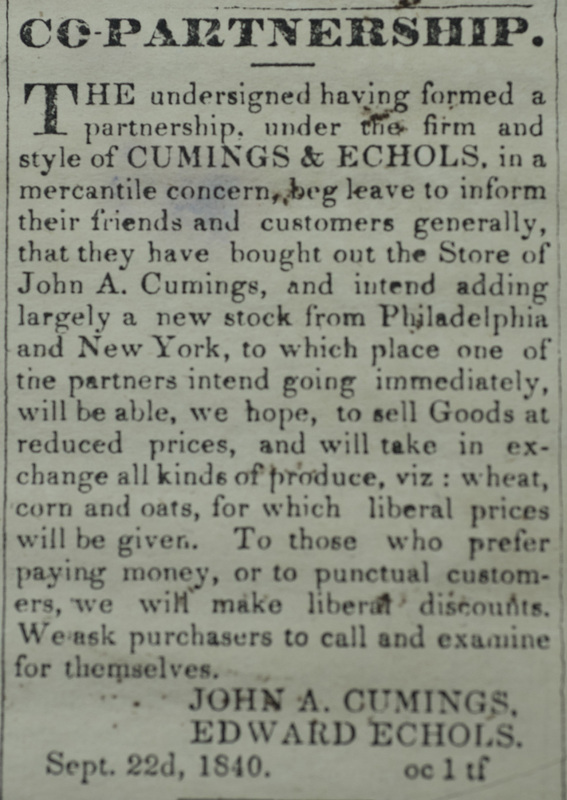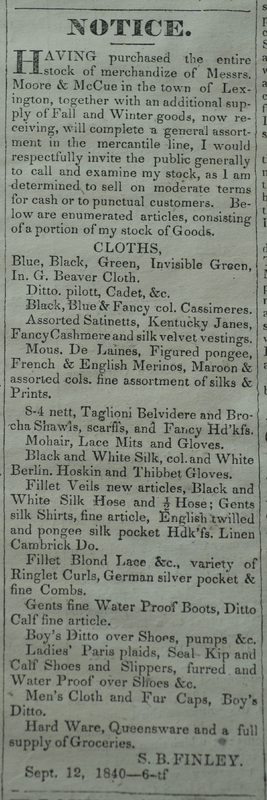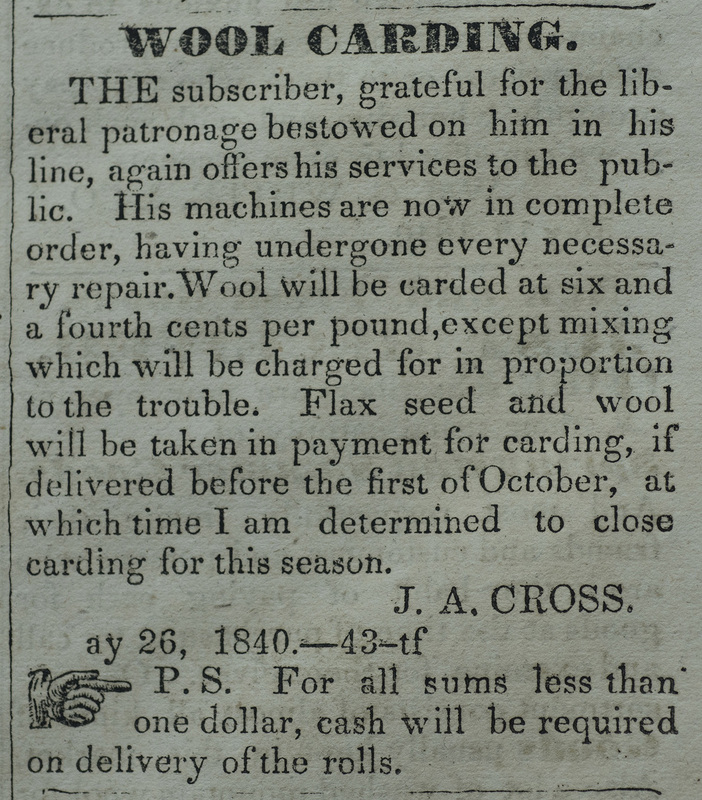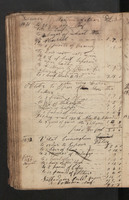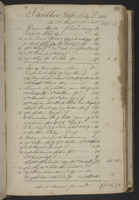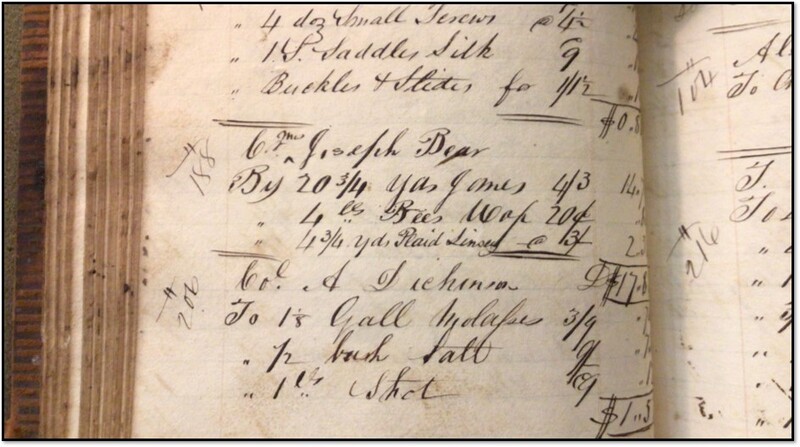A Rockbridge County Community
In the 1830s, Panther Gap was a lively place that boasted grist, saw, and carding mills, at least two general stores, and a post office. Rockbridge families filled their needs for textiles in many ways. They bought fabric from the general store, as well as weaving at home. Some families like the Jones family of Brownsburg also employed weavers to work in their homes for short periods. General stores obtained their stock by trading with local weavers, like Mrs. Baer, as well as by purchasing large amounts of goods from wholesale merchants in Philadelphia and New York.
Commerce and Advertising
The Whipple Store account book in Brownsburg, dating from the 1860s, shows samples of gingham and calico that were available. These textiles were purchased in Philadelphia and New York and later advertised in local newspapers upon their arrival in the store. Below are examples of advertisements from local newspapers including the Lexington Gazette that highlight how these sorts of goods and services would have been presented to the community.
Community Commerce
As well as buying in goods from wholesalers – goods that could come from other parts of the United States, or from England and other foreign sources - general stores also obtained stock from local people. The page from the daybook of Bacon’s General Store in Lexington shows the account of Violet Cunningham who traded her weaving of utilitarian fabrics for household goods. Violet did business with this store for many years in the 1820s and 1830s.
In the Wise’s store record Joseph Baer Senior purchases cotton yarn and cotton shirting. The cotton yarn and indigo would have been used by the Baer family weavers and the 10 yards of cotton shirting would have been used for clothing.
The drafts that the Baer sisters collected were for rather fancy household goods, but utilitarian fabrics were also woven at home. An entry from Sterrett’s store shows Mrs. Baer getting credit at the store for 20 ¾ yards of jeans and 4 ¾ yards of plaid linsey. Drafts for these fabrics either were not needed by accomplished weavers, or were not special enough to be saved.
Store Credit
The kinds of weaving represented by the drafts in the Baers’ papers helped the family’s economy by providing textiles for bedcovers, table linen and towels. They were probably also used to help new couples set up housekeeping.
It is clear from the entries in the daybooks of general stores that utilitarian fabrics such as jeans, linsey and flannel used for clothing, and tow linen used for bags and work smocks were also woven on home looms. Often the excess was taken to the store and traded for credit. Records of these transactions show us how many local families were weaving and the kind of fabric they wove. It seems that different stores had different policies for the trading of home woven cloth for credit. Wise’s store in Panther Gap showed no transactions of this type, but Sterret’s has an entry showing Ann Baer trading yards of tow linen for credit. Moore and Dunlap, the general store in Kerr’s Creek, took in a great deal of fabric from home weavers.
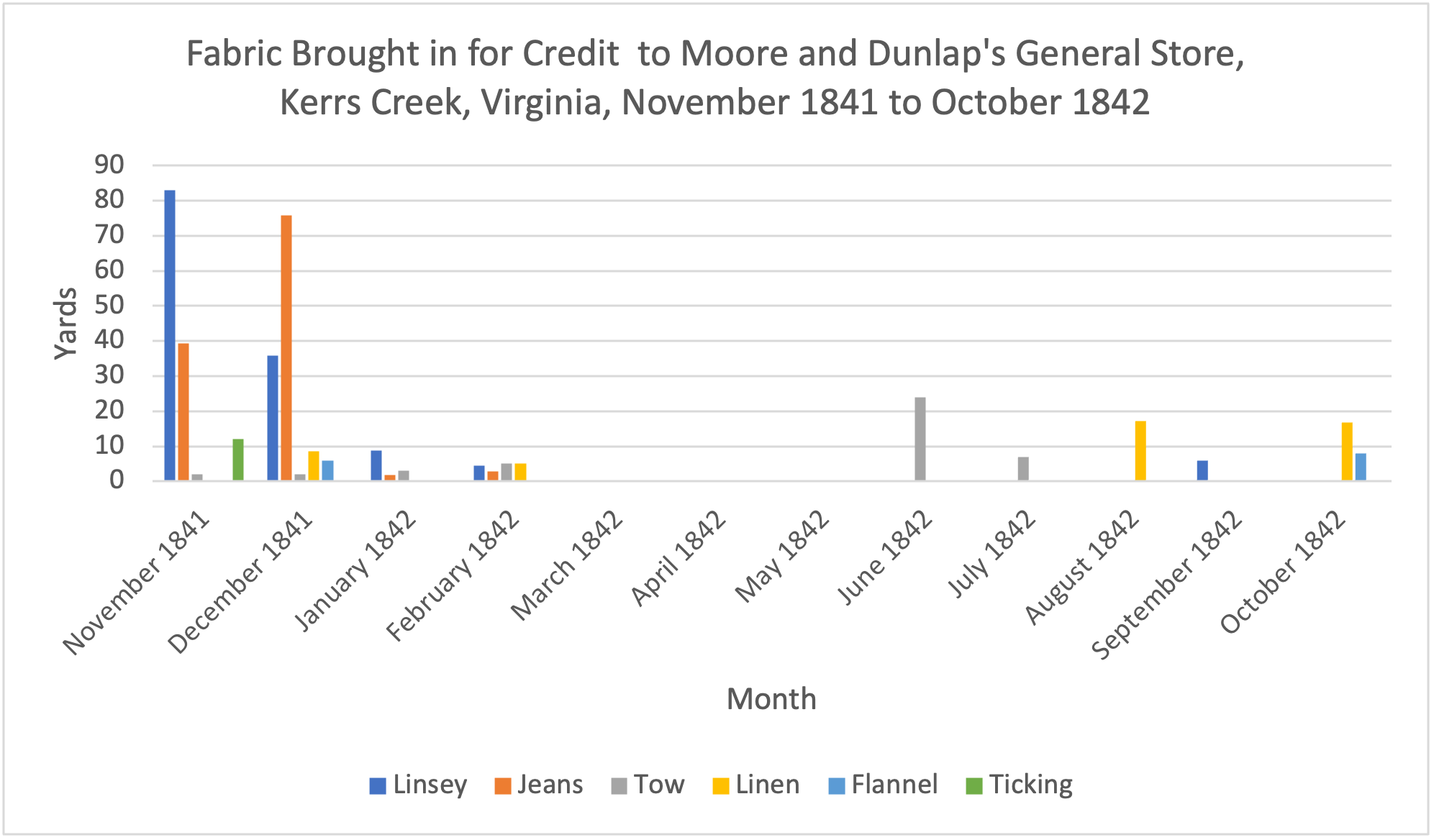
| Total Number of Yards: | 386 |
| Linsey | 176.75 |
| Tow | 40.75 |
| Linen | 40.75 |
| Flannel | 14 |
| Ticking | 12 |
Altogether, twenty families brought in fabric for credit. Often, a man’s name was on the account, but whether he did the weaving, or was bringing in his wife’s and daughters’ work is not clear.
Between December and September any fabric brought in was brought in by single women – Miss Phoebe Thomas, Miss Sophia Harper, Miss Peggy Morris, and Miss Betsey McKemy twice.
The pattern showing that the bulk of fabric trading was for linsey and jeans and done in October, November and December held true for Sterret’s, Wilson’s, and Dold’s general stores.
